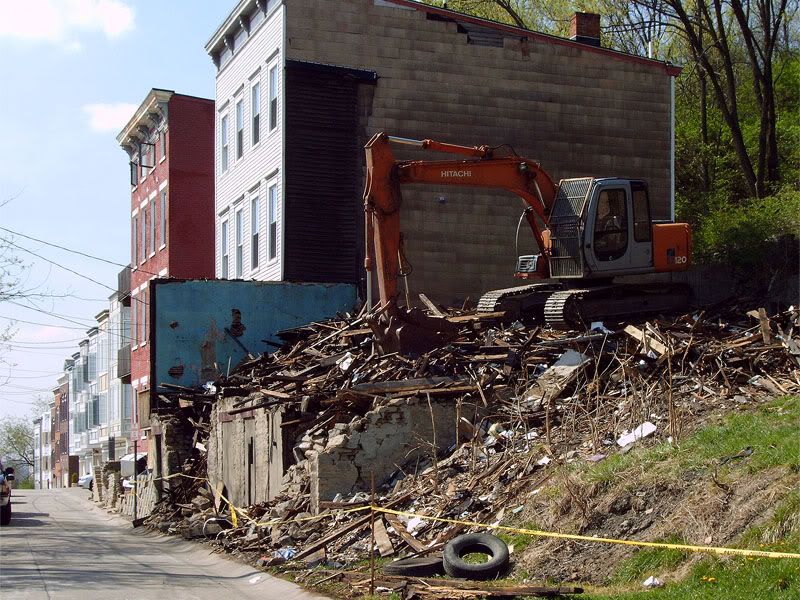On March 12, Ohio Attorney General Mike DeWine's office reached a $330 million settlement with five of the nation's largest servicers regarding foreclosure abuses, fraud, and deceptive practices.
Under a new program called Moving Ohio Forward, DeWine directed $75 million of that money to the state's counties to demolish abandoned, vacant, and blighted residential structures.
In July, Hamilton County was allocated $5.84 million, with the Hamilton County Land Reutilization Corporation providing $5.34 million in matching funds. The City plans to provide $3.49 million toward those matching funds, but won't have most of that funding available until next year.
The City currently has 2,410 condemned or vacated buildings and averages 90 demolitions annually.
Cervay said that the City will address the problem by using what he calls "a three-pronged approach":
- Continuing to procure contractor bids for large, multi-family buildings through the City's Purchasing Division and examining the reduction of performance bond requirements from a one-year period to four months, allowing small business enterprises (SBEs) to bid on more jobs;
- Promoting joint ventures between SBEs and larger SBEs or non-SBEs to build capacity, thereby improving SBE participation; and
- Working in conjunction with the Department of Public Services to create a Municipal Demolition Crew, which would train City employees in demolition, create five new jobs, and have the capacity to perform up to 140 demolitions per year.
"Through the use of a lot restoration strategy, including a side lot program and other demolition site reuse options, the City will help assure that it is not replacing one blighting influence with another blight," Cervay said.
Lot restoration also could lead to job training opportunities and a limited amount of permanent jobs, he said.
Previous reading on BC:
Hamilton County land bank has new blog, better info (7/16/12)
Cincinnati council supports land banking (6/28/10)
Ohio land bank bill now law (4/8/10)
Cincinnati RoundTable focuses on land banking, housing court (3/31/10)
Ohio county land banking passes House committee (12/14/09)










